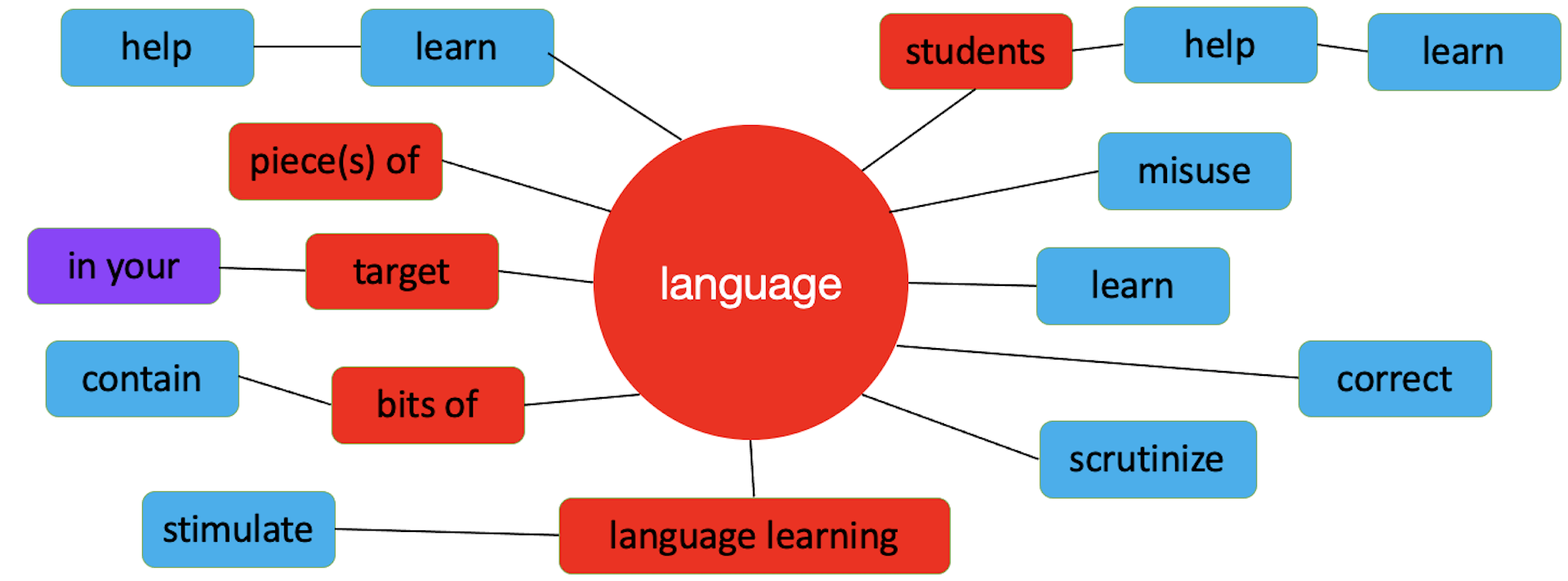The Versatile ELT BlogA space for short articles about topics of interest to language teachers.
Subscribe to get notified of
|
Collocation and VersaTextI had an email from a teacher who loves using my VersaText tool with his students. In addition to the very welcome and rarely received praise for VersaText, he was enquiring into the possibility of adding a collocation feature. As you know, VersaText works with single texts, its slogan being, “learning language from language, one text at a time”, collocations are vanishingly rare. In fact, “vanishingly rare” is a strong collocation in English. Check out the examples in #SkELL.
#Collocation is defined variously. First and foremost, collocation consists of two content words of different parts of speech. Compound nouns and adjectives, phrasal and delexical verbs are not collocations. And neither are words that combine with that/ -ing / inf / wh-/prepostions. These are colligations and offer very little choice, if any. You’ve all seen gap fills in coursebooks and exams that test this. Collocation does permit some variation, but within limits of acceptability if you are going to use the patterns of normal usage of the language. One category of definitions of collocation revolves around statistical frequency. These definitions rely on the number of times words occur in close proximity to each other. The verb collocates of trouble, for example, occur frequently within four words before and/or after the noun in SkELL's huge sample of English. Other definitions of collocation are phraseological: cause trouble is the core of a clause, which is the essential structure that creates Messages, which in turn constitutes text. Up the Hierarchy of Language we go! Most key words in most texts collocate with different items because the author is telling us something new about the word. And this is why a collocation tool in VersaText would be by and large redundant. One thing we can be sure of in a text is that the author is not going to repeat the same message repeatedly, again and again, over and over, unless they have some rhetorical reason for doing so. Here is an example. In VersaText’s sample text, Learning Zone (a transcript of a TED Talk), we see that the verb spend is frequently used with time, and with other time words, e.g. minutes, hours, our lives. It occurs 13 times in the text. Time occurs 28 times in the text and is used thus: CTRL F in the browser highlights the nominated word as it occurs in the cotext of the target word. Improve occurs 15 times in the text, each time in a different Message. This is far more typical of words in text than a frequently used collocation like spend time. Go to VersaText, select the Learning Zone text from the list, then click Wordcloud at the top. If you want the lemma of improve, for example, choose the lemma radio button under the word cloud. Click on any word to see its concordance in this text. This motivates many discovery learning tasks for the students. If you want to learn more about studying and teaching English with VersaText, click the Course button at the top of the VersaText pages. My phraseological approach to collocations in single texts is the Word Constellation. See my blog post linked below. This is a word constellation. It is built upon a VersaText concordance of the word language in text about language learning.
0 Comments
Leave a Reply. |
To make a comment, click the title of the post.
Archives
July 2024
Categories
All
|







